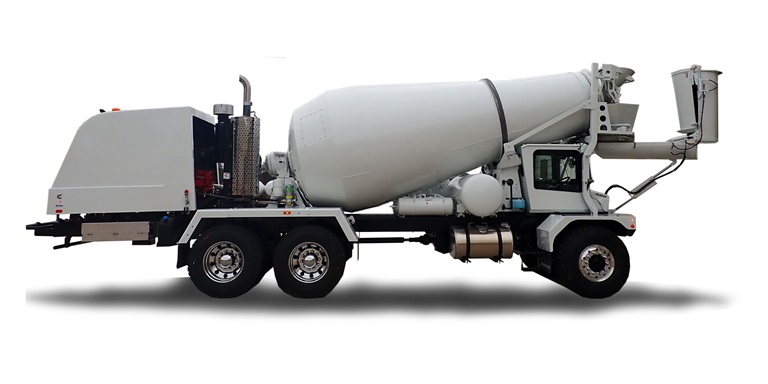What is a Concrete Truck? Commonly known as a concrete mixer truck or cement mixer truck, it's a specialized vehicle designed to transport and mix concrete from a batching plant to a construction site. Its most recognizable feature is the large, rotating drum on the back.

Their primary job is to keep the concrete in a plastic, workable state during transit. If concrete is mixed at the plant and then sat still in a truck, it would begin to set and become unusable.
1. Main Types of Concrete Trucks
① Transit Mixer (Standard Concrete Mixer Truck): Has a rotating drum mounted on the back.
Function: Concrete is loaded at the batching plant and mixed during transport.
Key Feature: The drum continuously rotates to prevent concrete from hardening.
② Volumetric Concrete Mixer Truck: Carries separate materials (cement, sand, aggregates, water) and mixes them on-site.
Function: Produces fresh concrete as needed — ideal for small or remote jobs.
Key Advantage: No waste and precise mix control.
③ Rough Terrain Concrete Mixer: Compact, self-loading 4x4 mixers for off-road or remote locations.
Function: Can load, mix, transport, and discharge concrete independently.
④ Agitator Truck: Similar to a transit mixer but usually transports ready-mixed concrete for shorter distances.
Function: Keeps concrete agitated to prevent segregation.
2. How It Works
① The truck is loaded with mixed concrete (or raw materials for volumetric mixers).
② The drum rotates continuously during transport to keep concrete homogeneous.
③ Upon arrival, the drum reverses direction to discharge concrete via chutes.
④ After unloading, the truck is washed to prevent buildup.
3. The Workflow of a Concrete Trucks
① Loading: The truck is loaded at a batching plant. The dry ingredients (cement, sand, aggregate) and water are loaded into the drum. Sometimes, the dry materials are loaded first, and water is added later.
② Mixing & Transport: Transit Mix (Dry Load): The drum is turned at a slow "agitating" speed (2-6 RPM) to simply keep the mixture from settling. Water is often added on-site just before pouring.
③ Central Mix: The concrete is fully mixed at the plant, and the drum rotates at an "agitating" speed during transport to maintain consistency.
④ Pouring: On-site, the driver positions the truck, extends the chute, and reverses the drum's rotation. This action pushes the concrete out, which then slides down the chute into place (e.g., forms for a foundation, sidewalk, etc.).
⑤ Cleaning: Immediately after pouring, the crew washes out the drum and chutes to remove any residual concrete. This is crucial to prevent damage to the equipment.
The concrete truck is an indispensable link in the modern construction supply chain, making it possible to place high-quality, ready-mixed concrete efficiently on sites of all sizes.





